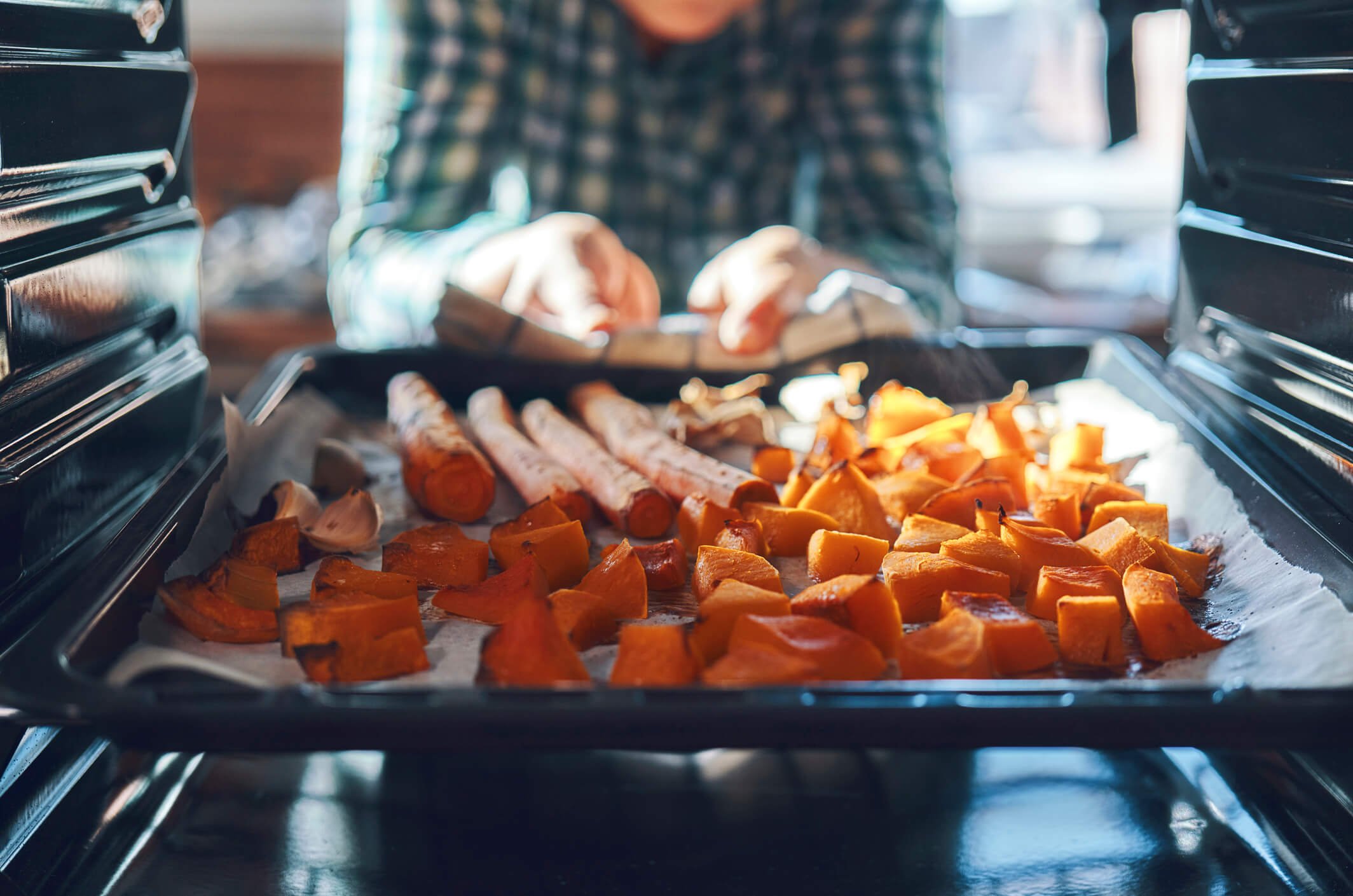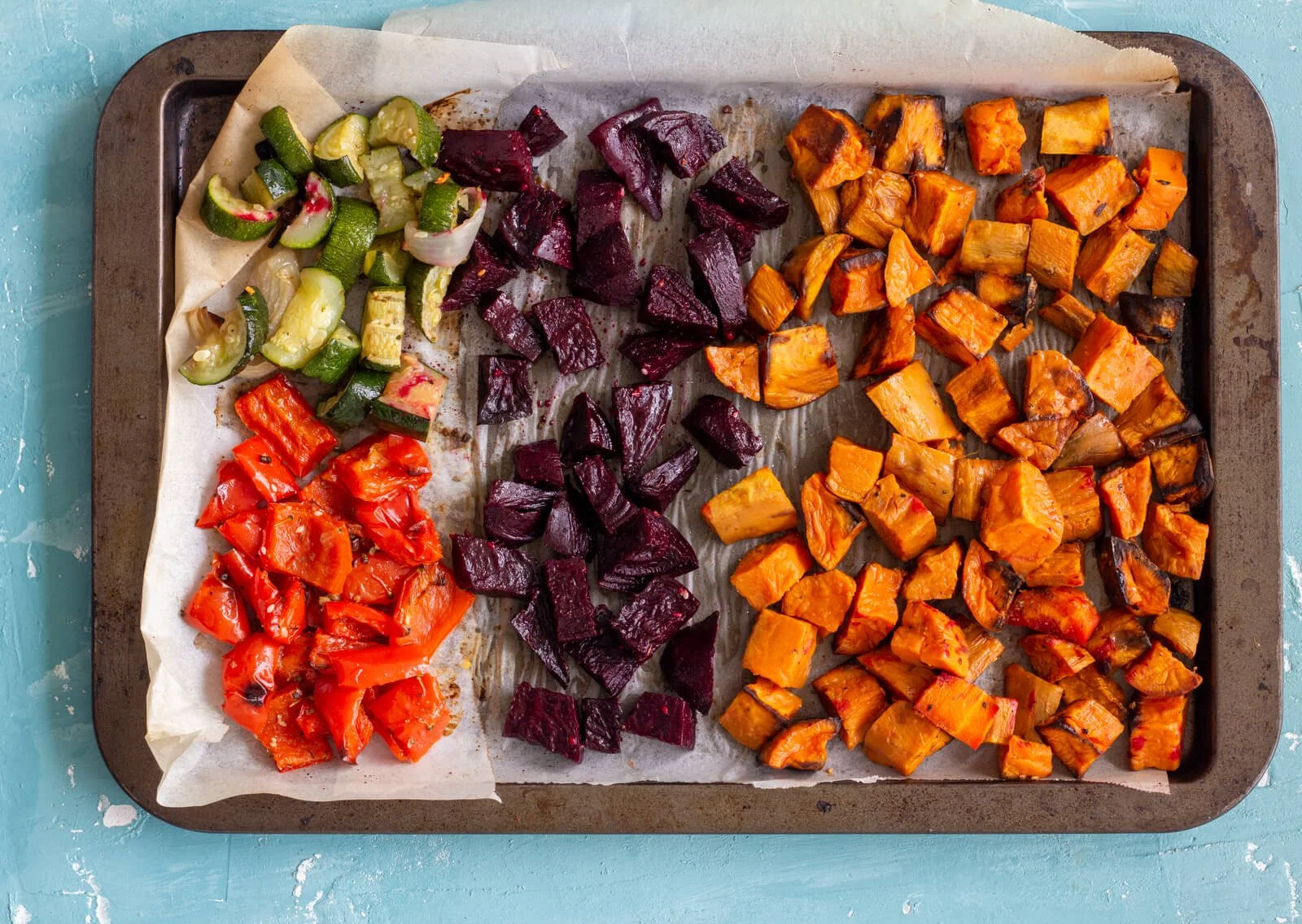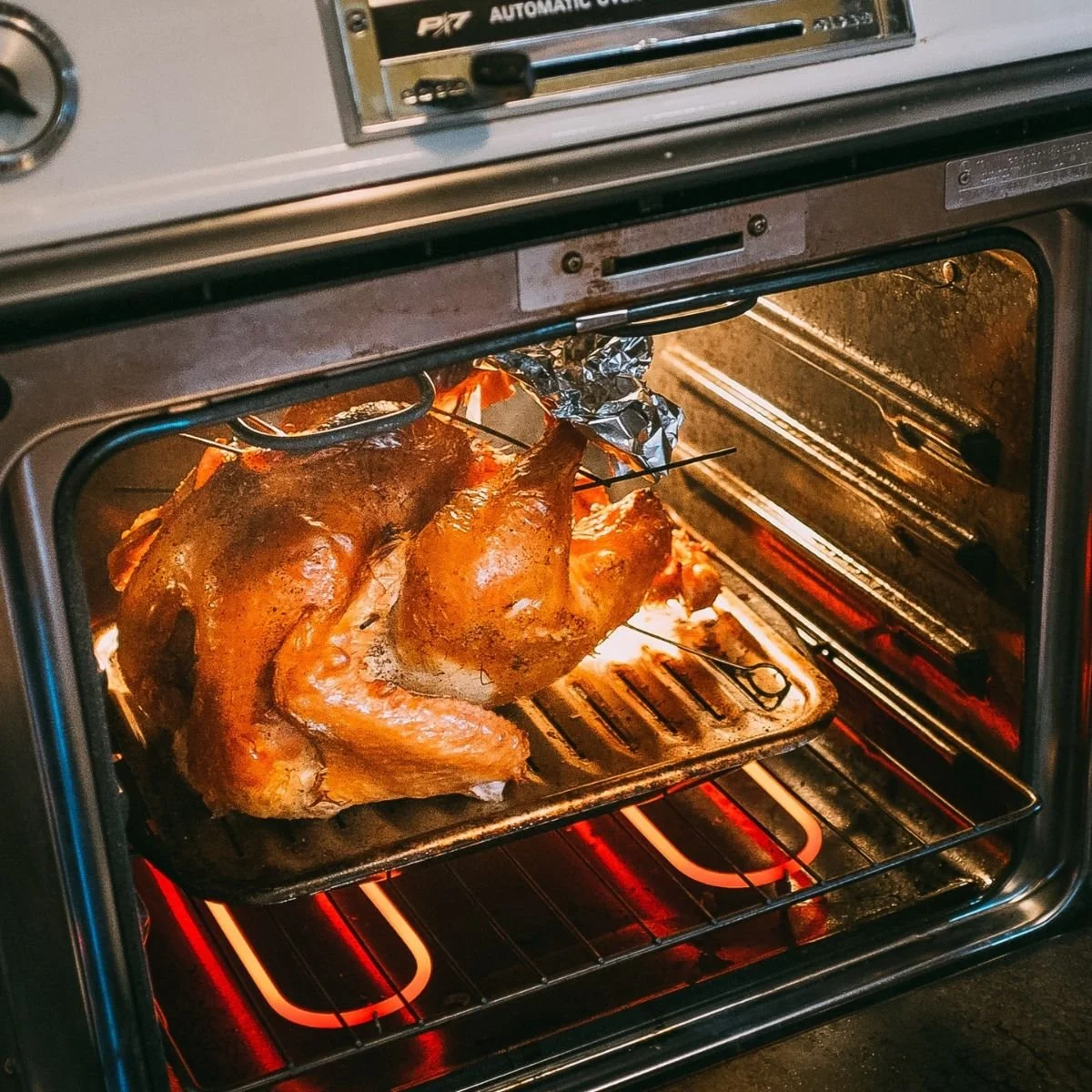Roasting Food: Mastering the Art of Flavorful Cooking
Discover > Texas Home Cooking > Roasting Food: Mastering the Art of Flavorful Cooking
Roasting food is a culinary art that unlocks flavors and textures. Whether it's a standing rib roast, an oven rack round roast, or a classic holiday roast, dry heat at temperatures of at least 150°C (300°F) creates culinary magic, evenly cooking meats and preserving their moisture and nutrients. Roasting isn't limited to meats; it elevates vegetables as well. With patience and practice, mastering roasting—exploring food browning, slow roasting, and that coveted browned crust—can turn ordinary meals into extraordinary dining experiences.
Understanding Roasting
In the realm of culinary arts, understanding roasting is a key to unlocking exquisite flavors and textures. Roasting vegetables is a prime example of this technique, where the natural essence of ingredients is enhanced, resulting in delectable dishes.
What is Roasting?
Oven roasting is a favored cooking method of mine, especially for roast meats. It involves cooking food uncovered in an oven using dry heat. This allows for even cooking, enhancing flavors through caramelization and browning. It's particularly effective for larger cuts, ensuring the meat cooks adequately. Meat roasted in this manner turns out beautifully cooked and flavorful.
Roasting Method Vs Baking
Roasting and baking, both dry-heat oven methods, differ in their approach. Roasting involves cooking uncovered, ensuring even cooking and crispy exteriors, often for large cuts of meat and hardy vegetables. In contrast, baking primarily transfers heat through one surface, suitable for delicate dishes like cakes and pastries. As a cooking enthusiast, I value roasting for its flavor-enhancing prowess in various dishes.
Meats Suitable for Roasting
Roasting is a fantastic cooking method that brings out the flavors and tenderness of various meats. In this section, we'll explore different types of meats that are perfect candidates for roasting.
Red Meats
Roasting and baking, both dry-heat oven methods, differ in approach. Roasting involves cooking uncovered, ensuring even cooking and crispy exteriors, often for large cuts of meat like beef tenderloin (What wine goes well with beef tenderloin?) and pork loins, as well as hardy vegetables. Baking primarily transfers heat through one surface, suitable for delicate dishes like cakes and pastries. As a cooking enthusiast, I value roasting for its flavor-enhancing prowess in various dishes.
Poultry
Poultry, like roast chicken and turkey breast, offers popular roasting choices. Whole chickens yield flavorful centerpieces, customizable to your tastes. Turkey breast, especially during festivities, delivers tender, juicy meat for an impressive presentation, perfect for various side dishes. Duck, although less common, rewards with its deliciously crispy skin and tender meat when roasted to perfection.
Seafood
While not as common, seafood can also be roasted for a delicious and unique meal option. Large whole fish or fish fillets can be roasted to develop incredible flavor and tenderness. With a wide variety of fish available, such as salmon, sea bass, or cod, there's a roasted seafood dish suited for everyone's tastes.
Vegetables Ideal for Roasting
Roasting vegetables is an excellent way to enhance their natural flavors and create delicious dishes. In this section, I will discuss various vegetables that are ideal for roasting, divided into three sub-categories: Root Vegetables, Leafy Vegetables, and Other Vegetables.
Root Vegetables
Root vegetables are some of the most popular choices for roasting due to their sturdiness and ability to caramelize, bringing out their natural sweetness. Here are some examples:
Potatoes: One of my favorite root vegetables to roast are potatoes, whether it's Russet, red, or even sweet potatoes. Their high starch content lends a crispy exterior while keeping the inside tender.
Carrots: Roasting carrots with a little olive oil and seasoning transforms them into a vibrant and tender side dish.
Beets: Roasted beets develop a deep, earthy flavor and a fantastic texture that pairs well with salads or as a stand-alone side.
Leafy Vegetables
While leafy vegetables may not be as common for roasting, there are a few that hold up well under high heat:
Brussels sprouts: This cruciferous vegetable becomes perfectly crispy and caramelized when roasted, creating an irresistible side dish.
Kale: Roasting kale chips is a healthy alternative to traditional potato chips (how long do potato chips last?). The high heat dries out the leaves, giving them a nice crunch.
Other Vegetables
There are several other vegetables that are perfect for roasting as well. Some examples include:
Butternut squash: I love to roast butternut squash to bring out its natural sweetness and create a lovely, tender texture.
Cauliflower: Roasting cauliflower adds depth of flavor and a crispy exterior that's both delicious and satisfying.
Broccoli: Roasted broccoli transforms into a scrumptious side dish with slightly charred edges and a tender interior.
Preparation Techniques
When it comes to mastering the art of roasting, understanding preparation techniques is paramount. These techniques are the building blocks of flavor enhancement and culinary excellence. In this section, we'll dive into the world of preparation techniques, including marinating, seasoning, resting, and more, to ensure your roast meats and vegetables are nothing short of extraordinary.
Marinating Techniques
Before roasting, I like to use a marinade to enhance the flavors of my fish or meat. A simple yet effective marinade can include olive oil, garlic, honey, and rosemary to achieve an amazing taste. Here's a quick way to make this marinade:
Combine 1/4 cup olive oil with 3 cloves (how long do cloves last?) of minced garlic, 1 tablespoon honey, and 2 tablespoons chopped rosemary in a bowl.
Mix well and let it rest for about 10 minutes to allow the flavors to blend.
Coat the meat or fish with the marinade, making sure all surfaces are covered.
Allow it to marinate in the refrigerator for at least 1 hour, letting the flavors seep in and tenderize the meat.
Seasoning Methods
When seasoning, I always turn to salt and pepper as my go-to spices. They are simple to use and can enhance the meat's natural flavors. To season properly, follow these steps:
Liberally coat the meat or fish with salt and pepper.
Make sure to season all sides, including any corners or folds.
Optionally, incorporate herbs or other spices to your liking. Common choices include rosemary, thyme, paprika, or cayenne pepper.
Additionally, using melted butter or olive oil on the surface can help to create a crisp, golden-brown crust during the roasting process.
Resting Process
I always make sure to rest my meat or fish before and after roasting. Here's why:
Before roasting: Allowing the meat to rest at room temperature for about 30 minutes helps it cook more evenly. This is especially important if the meat has been marinated or seasoned.
After roasting: Resting the meat for at least 15 minutes after taking it out of the oven allows the juices to redistribute throughout the meat, ensuring a moist and tender result.
Remember to use a meat thermometer while roasting to ensure that the cooking temperature is reached, and always follow recommended cooking times.
As a final tip, preheating the oven and using a roasting pan with a rack ensures even cooking and easy cleanup. Now you're ready to enjoy a perfectly roasted meal.
Roasting Process
The roasting process is where the magic of cooking unfolds. It's the culmination of understanding temperatures, timing, and the science of culinary transformation. In this section, we'll delve into the heart of roasting, exploring the ideal temperatures, timing, and techniques that lead to perfectly cooked, flavorful dishes. Whether you're roasting meats or vegetables, mastering this process is the key to culinary excellence.
Roasting Temperature
When roasting food, I always use a temperature of at least 150°C (300°F) to ensure even cooking. This dry heat method, which uses hot air to surround the food, results in a flavorful and crispy exterior due to caramelization and the Maillard reaction1. An oven or other heat source is necessary for roasting, in contrast to other cooking methods such as broiling.
Roasting Time
The duration of roasting will depend on the type of food I am cooking. As a general rule, larger cuts of meat will require longer roasting times. For instance, a whole chicken may need around 20-25 minutes per pound, while smaller cuts like vegetables can be cooked in less time. Keeping an eye on the food and checking its internal temperature with a meat thermometer can help in determining when it is cooked to perfection.
Basting During Roasting
As the food cooks, I sometimes baste it to retain moisture and enhance its flavor. Basting involves brushing, spooning, or pouring liquid (such as melted butter, oil, or stock) over the food while it roasts. This adds moisture to the dish and can prevent it from drying out. Basting with red wine or vinegar can also add a unique flavor2.
When roasting meats that are prone to drying out, such as poultry, I prefer to baste frequently. However, for cuts with higher-fat content or quicker-cooking items like vegetables, basting may be less necessary.
Achieving the Perfect Brown Crust
A successful roast often has a perfectly browned and crisp exterior. To achieve this on my food, I start by preheating the oven and allowing it to become very hot. I then place my food on a sheet pan3, providing proper space for air circulation and even cooking.
During the roasting process, the Maillard reaction occurs, which results in the appetizing browning of the food's surface4. I like to roast my food uncovered, as this promotes better browning and a crispier finish. If necessary, I will briefly broil the food at the end of the cooking process to enhance its color and texture.
Footnotes
https://www.foodnetwork.com/how-to/articles/how-to-roast-meats-a-step-by-step-guide ↩
https://www.masterclass.com/articles/how-to-roast-properly ↩
Common Roasting Mistakes
Roasting is a culinary adventure, but it has its pitfalls. One common mistake is overcrowding the baking sheet or pan, hindering even cooking, resulting in overcooked and undercooked portions. To avoid this, ensure proper heat circulation by giving your ingredients ample space.
Resting roast meats is essential. It allows juices to redistribute, making them juicier and more flavorful. Aim for a 10-15 minute resting period before carving or serving.
For that perfect crispy texture in roasted foods, like vegetables or potatoes, avoid excessive oil use. A thin, even layer is essential; too much oil can lead to a greasy, heavy result.
A meat thermometer is a game-changer. It ensures your roast meats cook evenly, delivering consistently tender and juicy results. Don't forget to preheat your oven for a more consistent cooking process.
Lastly, don't discard flavorful drippings from the roasting pan; use them to create mouthwatering gravies or sauces to enhance your roast meats and sides.
These tips help avoid common roasting mistakes, improve your cooking skills, and ensure better results for your dishes, whether it's a simple family dinner or an elaborate holiday feast.
Embrace the Art of Roasting
Mastering the art of roasting food, whether it's a top round roast or any other dish, can truly elevate your culinary skills. Understanding the principles of even cooking and the Maillard reaction, along with selecting the right cuts and ingredients, is essential.
Now, it's your turn to embark on this flavorful journey. Start with small steps, experiment with different recipes, and don't be afraid to make mistakes along the way. With patience and practice, you can become a roasting maestro, turning ordinary meals into extraordinary dining experiences.
So, the next time you're in the kitchen, remember the magic of roasting. Embrace the sizzle, the aroma, and the anticipation of a perfectly browned crust. Let your creativity run wild, and explore the world of roasting to cook food that delights your senses.






